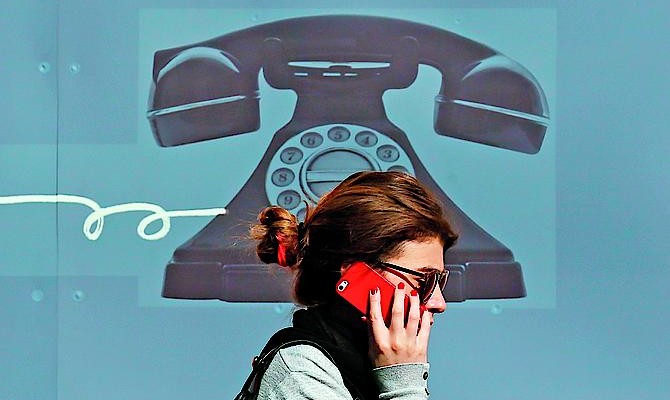Technology
mobile internetUkrainians living in villages and small towns will not see new 3G technology in the nearest future

Last Friday the National Communication Regulation and Informatization Commission (NCRIC) posted on its website the draft of the tender for the issuing of licenses for 3G, UMTS communications. The document contains a number of distinctive features that will have a serious impact on the tender process and the construction of new high-speed networks in the future.
Minus one
There is a proposal to not allow operators that already have UMTS licenses to participate in the tender. This means that one of five participants that submitted preliminary bids will be weeded out – specifically, Ukrtelecom (which is developing the Trimob 3G operator). Representatives of Kyivstar earlier stated that licensed operators should not be allowed to participate in the tender. CEO of the company Oleksandr Barinov told Capital that Ukrtelecom needs additional frequencies to expand the capacities of the existing network and lease out a part of the infrastructure to other players on the market.
What’s the price of a license?
The NCRIC also proposed a mechanism for setting the starting fee of a license. In the opinion of member of the regulatory body Olena Ulasenko, the fee will be from UAH 1.053 bn to 1.701 bn. The term of validity will be 15 years. This was the term for which the government decided to issue a 3G license to Ukrtelecom in 2005 in order to preserve preferences for the state. At the end of 2008, however, the Cabinet of Ministers decided that a radio frequency license would be issued at the base tariff only for 5 years and for every additional year of extension a company should pay 10% of the fee.
In its calculations the commission factored in the cost of 1 megahertz per capita, which was set at the tenders in neighboring countries. In Turkey this indicator is the lowest – US $0.13, in Romania – US $0.16 and in Poland – US $0.21. The fee for a license, in the opinion of the regulatory body, should include the cost of conversion, which is UAH 670 mn from each of the three new licensees.
Noteworthy is that the representatives of Kyivstar at the end of last week announced their readiness to invest no more than UAH 1 bn, which is the minimum starting price of the tender. If the fee for a license is overpriced this will lead to the protraction of the terms of development of networks and a considerable hike in 3G service fees for subscribers, according to Kyivstar.
Representative of Astelit life:) Andriy Lebedev said that in setting a license fee GDP and the wellbeing of Ukrainians must also be factored in.
Without social obligations
One of the most important conditions for the issuing of a license is the obligation of an operator for coverage of territory and the population. The NCRIC proposed at the last meeting of the 3G working group to include this clause in the terms of licensing. All present supported this idea. As a result, the clause that a licensee must cover the network of cities with a population of more than 10,000 was stipulated in the project. This will basically give operators the possibility of considerably lower network coverage than that of 2G communications. In the licensing terms for 2G it was stipulated that operators should cover no less than 80% of the territory of all populated cities, regardless of the number of residents.
As such, now operators will obtain the right to not cover a significant number of villages the population of which is around 14 mn and even certain small cities. For example, the population of the city of Chop is all of 9,000. Operators will cover such populated cities only if it economically substantiated.
The fact is that base stations with a low radius operate on radio frequencies issued by the state in the range of 2 GHz. For this reason, they are typically used for the coverage of cities. In the villages operators, as a rule, operate on a much lower range of frequencies. The radius of one base station GSM-900, for example, is 35 km.
However, there are no plans to issue similar licenses under UMTS. It is also worth pointing to one of the peculiarities of the talks between operators and the government over recent years. Businesses believe that the state should not create a special fund for the development of high-speed Internet in villages and narrowing of digital gap with cities at their expense as a 3G license will immediately guarantee this service to Ukrainians across-the-board.






 of the agreement of syndication with Financial Times Limited are strictly prohibited. Use of materials which refers to France-Presse, Reuters, Interfax-Ukraine, Ukrainian News, UNIAN agencies is strictly prohibited. Materials marked
of the agreement of syndication with Financial Times Limited are strictly prohibited. Use of materials which refers to France-Presse, Reuters, Interfax-Ukraine, Ukrainian News, UNIAN agencies is strictly prohibited. Materials marked  are published as advertisements.
are published as advertisements.